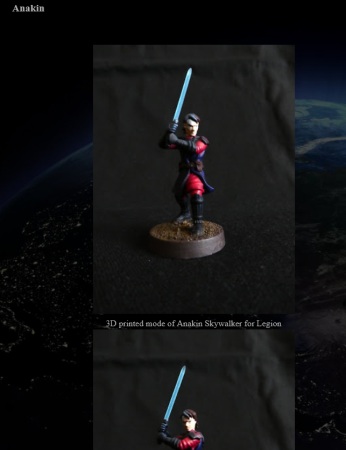In some rules, a tree on the tabletop is… well… a tree. You can't walk through or shoot through a tree, and you can't move it.
But in other rules, a forest is represented by an area cloth, and the individual trees on that cloth represent – not actual trees – but the concept of trees. The trees standing on the cloth mean this is a forest, and it doesn't matter how many trees there are or exactly where they stand.
Area cloths are commonly made with felt, usually in a color that corresponds to the terrain they represent (forest, jungle, swamp, etc.). You can also buy commercial products, printed on fleece or other materials.

I'm experimenting today with using a type of shelf liner to make area cloths. This particular product is called No-Slip Shelf Liner, sells at Dollar Tree for $1.25 USD for a 1' x 6' roll, and consists of a rubbery material that's nearly indestructible. It comes in black, white, gray and tan.

Above, you can see a 32mm Orc standing on a roll of gray shelf liner. The material has a little curve in it due to being rolled up, but I suppose it will flatten if pressed flat for a while.

Above is a closer look, so you can see the nature of the shelf liner. I suspect it will be longer-wearing and easier to clean than a felt cloth. It would be more suitable if it came in another color – like green!

The rules I'm using suggest area cloths in square sizes of 8", 12" and 16". With the 12" roll, it is easy to measure 12" along the roll, and cut the material with scissors, a craft knife, or a roller cutter. The rules I'm using also suggest rounded corners for 'natural' terrain, so I used a roll of tape to cut around to make the corners.

Above, you can see a finished 12-inch-square area cloth draped over a commercial hill piece. The cloth might drape better if heated with a blow drier. Some of the terrain color shows through the shelf liner material.

Making 8" squares requires two cuts, and leaves 4" of shelf liner excess. You could also leave some curves off, so that you could combine cloths to make larger areas, such as two adjoining forests.

Making the 16" squares is more difficult with a 12"-wide roll. You cut a 12" x 16" piece, and then cut a 4" x 16" piece (using the leftover from making 8" squares). Combine the two pieces to make a 16" square. In the picture above, the pieces seem mismatched, but that's just a shadow from the slightly curled edge.
(I couldn't think of a way to connect the two pieces, and it doesn't seem necessary as the shelf liner is, after all, non-slip!)

So here's an example of how this is supposed to work. Above is an Evil Pumpkin Field. The shelf liner marks the extent of the field; the terrain pieces identify the nature of the field, and the number and placement are up to your taste.

Now, when figures engage in combat in the Evil Pumpkin Field, the shelf liner does not move – it is the field. But the terrain pieces do move to make room for the figures. They do not represent specific Evil Pumpkins, but the concept of Evil Pumpkins being in this field. They can even be removed, if needed for gameplay.
I know this is pretty basic stuff for some of you, but I wanted to explain it fully for anyone new to this concept of terrain in wargaming.
Time will tell if this non-slip shelf liner is a better option than time-honored felt. I'm being open-minded.








